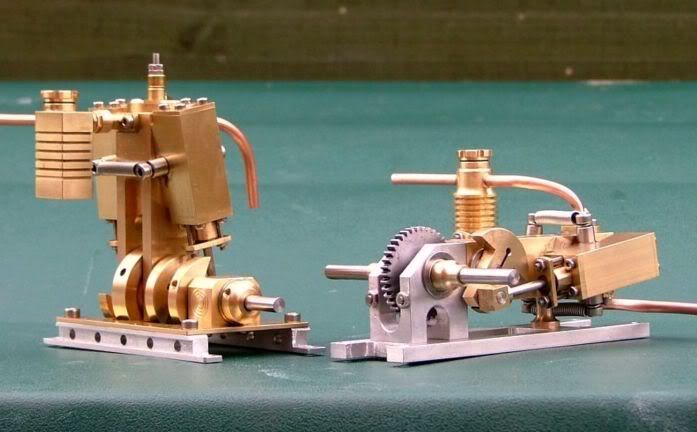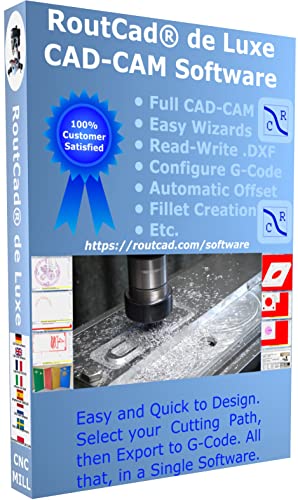Tony Bird
Senior Member
Hi,
I have done a bit of R&D for a friend on a gear box for a model paddle boat. The steam engine that will power it is a single acting oscillator with an 8mm bore and 16mm stroke it is based on a Mamod size I think; so there isn't a lot of power to play with. A successful gear box with this size engine has been made using spur gears but a more compact one using a worm drive was desired. A couple of gear boxes using heavy brass gears have been made but they had too much friction. The hull to be driven is basically to the Mini Vap 50 rule it being just over 20" long and works quite well using the engine driving the paddles through a spur gear box.
The gear boxes that have too much friction.

So I am trying nylon gears.

The spur gear box using a 16:1 ratio drove a pair of 3.1/2"paddles easily. So a prototype engine and wheel and wheel gear box was made. The prototype gear box was designed so it could easily be made with different gear ratios. First an 18:1 ratio was tried; having a slightly lower ratio was used to overcome any higher friction that a worm and wheel gear box might have.


With the engine support fitted.

A cylinder was made using a K&S brass tube.







A balanced flywheel was made.

The steam ports were drilled in the port block using a jig.

As there is no means of lubrication in the model boat a long aluminium piston was used. I have found the combination of an aluminium piston working in a brass cylinder works well with saturated steam.

Checking the piston steam port clearance.

Checking the finished engine and gear box using steam.

With a boiler pressure of 20 psi it was found quite difficult to stop the engine by gripping the output shaft. So it was decide to build a lighter streamlined version using the same gear ratio of 18:1.
For the engine/gear box frame some 1" square tube with 1/8" thick walls was used.


The same cylinder, piston and flywheel sizes were used.

The finished engine.



The two engines/gearboxes built.


The gears used were supplied by S.H.G. Models; the push fit gears are more concentric in use than the gears with bushes and were used on the second engine. The cost of the worm and wheel was £3.50; I quite like using well made nylon gears they are quieter running than brass and seem to wear very well. I have some 20 year old model railway locomotives that regularly have a lot of use which whose nylon gears are still in good condition.
The second engines port block has been designed if necessary to be large enough to take a double acting cylinder. Using a thick wall square tube to make the engine mount means that bearings dont have be used.
Video of prototype engine in steam.
https://youtu.be/VmcpC5wAd5o
<iframe width="420" height="315" src="https://www.youtube.com/embed/VmcpC5wAd5o" frameborder="0" allowfullscreen></iframe>
Streamline engine in steam.
https://youtu.be/0hNhS5_UVF4
<iframe width="420" height="315" src="https://www.youtube.com/embed/0hNhS5_UVF4" frameborder="0" allowfullscreen></iframe>
If there are any questions please ask; but from tomorrow I am away for some time to where the internet isn't that reliable so it might be a while before I can answer.
Regards Tony.
I have done a bit of R&D for a friend on a gear box for a model paddle boat. The steam engine that will power it is a single acting oscillator with an 8mm bore and 16mm stroke it is based on a Mamod size I think; so there isn't a lot of power to play with. A successful gear box with this size engine has been made using spur gears but a more compact one using a worm drive was desired. A couple of gear boxes using heavy brass gears have been made but they had too much friction. The hull to be driven is basically to the Mini Vap 50 rule it being just over 20" long and works quite well using the engine driving the paddles through a spur gear box.
The gear boxes that have too much friction.

So I am trying nylon gears.

The spur gear box using a 16:1 ratio drove a pair of 3.1/2"paddles easily. So a prototype engine and wheel and wheel gear box was made. The prototype gear box was designed so it could easily be made with different gear ratios. First an 18:1 ratio was tried; having a slightly lower ratio was used to overcome any higher friction that a worm and wheel gear box might have.


With the engine support fitted.

A cylinder was made using a K&S brass tube.







A balanced flywheel was made.

The steam ports were drilled in the port block using a jig.

As there is no means of lubrication in the model boat a long aluminium piston was used. I have found the combination of an aluminium piston working in a brass cylinder works well with saturated steam.

Checking the piston steam port clearance.

Checking the finished engine and gear box using steam.

With a boiler pressure of 20 psi it was found quite difficult to stop the engine by gripping the output shaft. So it was decide to build a lighter streamlined version using the same gear ratio of 18:1.
For the engine/gear box frame some 1" square tube with 1/8" thick walls was used.


The same cylinder, piston and flywheel sizes were used.

The finished engine.



The two engines/gearboxes built.


The gears used were supplied by S.H.G. Models; the push fit gears are more concentric in use than the gears with bushes and were used on the second engine. The cost of the worm and wheel was £3.50; I quite like using well made nylon gears they are quieter running than brass and seem to wear very well. I have some 20 year old model railway locomotives that regularly have a lot of use which whose nylon gears are still in good condition.
The second engines port block has been designed if necessary to be large enough to take a double acting cylinder. Using a thick wall square tube to make the engine mount means that bearings dont have be used.
Video of prototype engine in steam.
https://youtu.be/VmcpC5wAd5o
<iframe width="420" height="315" src="https://www.youtube.com/embed/VmcpC5wAd5o" frameborder="0" allowfullscreen></iframe>
Streamline engine in steam.
https://youtu.be/0hNhS5_UVF4
<iframe width="420" height="315" src="https://www.youtube.com/embed/0hNhS5_UVF4" frameborder="0" allowfullscreen></iframe>
If there are any questions please ask; but from tomorrow I am away for some time to where the internet isn't that reliable so it might be a while before I can answer.
Regards Tony.































































![MeshMagic 3D Free 3D Modeling Software [Download]](https://m.media-amazon.com/images/I/B1U+p8ewjGS._SL500_.png)




















![DreamPlan Home Design and Landscaping Software Free for Windows [PC Download]](https://m.media-amazon.com/images/I/51kvZH2dVLL._SL500_.jpg)




























